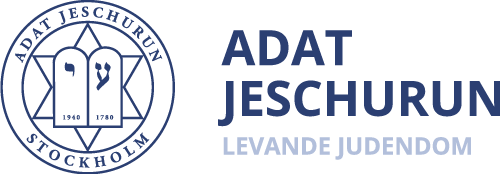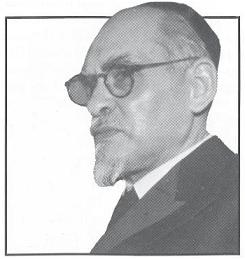THE INAUGURATION
It was, of course, not only the restoration of the synagogue’s interior that was necessary. To resurrect and reinstate the synagogue to a functioning institution a spiritual leader was also needed. It was necessary to finda rabbi who knew how to transmit the synagogue customs and traditions to a new generation. At just this time, Rabbi AI Jacobson had moved from Trondheim to Stockholm in order to escape the German occupation of Norway in April 1940. It was decided to restore the Heinrich-Barth-Strasse Synagogue in Stockholm under his spiritual guidance. Rabbi Jacobson remained the spiritual leader of the synagogue until his death in 1955.
The founders were John Benzian, David Kissinger, Max Korngold, Hans Lehmann, Moritz Pinéas, S. Rose Rauch, M. Weinheber, among others, all of who devoted enormous efforts and made great economic sacrifices to keep the synagogue running. The synagogue was maintained almost entirely out of funds collected on a voluntary basis.
Shortly before the High Holidays of 1940 the synagogue of Jeschurun was solemnly inaugurated, housed in an apartment in an old building on Linnégatan 20. The inauguration was attended by Rabbi Jacob Zuber, then serving in the Adat Jisrael synagogue on S:t Paulsgatan, and the Chief Rabbi, Rabbi Marcus Ehrenpreis.
Also participating in this historic Chanukat Habajit were representatives of the Jewish community in Stockholm and many other institutions. This inauguration was a strong and poignant celebration in the middle of the cruelest period of our generation. The opening speech held by rabbis Jacobson, Zuber and Ehrenpreis echoed both in the Swedish press and in the Jewish world outside of Sweden. This restored synagogue became a glimmer of light in the dark existence of the Jews and created new hope in the hearts of many. It also became a central point for many of the refugees who came here from Germany as well as from Czechoslovakia and Austria. The vast majority of visitors at that time were German speaking and sermons were held in German in the early days.
To give an idea of the general atmosphere in those days, it should be mentioned that a lot of tenants at Linnegatan 20 wanted to get rid of the synagogue. They even went as far as calling the police on one of the first nights of Sukkot in 1941 when the congregation made kiddush in the sukkah. ”The Jews are doing something strange in the yard.” The police immediately answered the call. When police officers stormed into the yard all present in the sukkah were shocked and wondered what had happened. But then, at the right moment, came a redemptive reply from one of the officers, a tall, strong man: ”Oh, it’s the time to celebrate the Feast of Tabernacles!” The officer in question was raised in Kristianstad and was familiar with Jewish customs and traditions through his Jewish childhood friends. They managed to persuade him and his companions to sit down with the others in the sukkah and drink a Lechaim! ! The police themselves were very friendly and explained the cause for their being called to the scene. They conveyed a picture of how the average person in Sweden at the time looked upon Jews and that which was Jewish…
In the autumn of 1942 the house at Linnegatan 20 was to be demolished and new premises had to be found. There was a lot of negative sentiment against the Jews at that time and most landlords were reluctant to lease space in their building for Jewish purposes, particularly for a synagogue. Rabbi Jacobson did, however, contact one of the directors of the real estate company AB Hufvudstaden, who had great understanding of the difficulties that existed. A large apartment was made available in the property at Biblioteksgatan 4, 2nd floor, and there the synagogue was able to remain for over 16 years until that building too was demolished.

